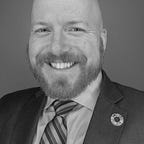We Must All Be Firefighters Now
Flying into Melbourne, Australia two weeks ago, we flew directly over one of the dozens of fires still burning there. Living in California, I’m used to the ground-level haze and smog that wildfires create, but I didn’t realize that the smoke could rise several miles into the sky.
Our plane flew 40,000 ft above the surface of the Earth and as we crossed this river of smoke, it seemed as if its highest tendrils could almost stroke our underbelly. Staring at the undulating column of smoke as it entered into the river, the unease and fear of what the fire was doing below turned to hardened resolve as the importance of our trip became even more evident.
Our purpose was to shift capital, in this instance not necessarily away from fossil fuels, as we were mostly speaking with impact investors, but rather towards something, specifically renewable energy and a bank built to finance this transition.
Collectively, we have over $13T in deposits at the banks in the US, the top 1% of banks hold 70%, or ~ $9T. They get to decide what that gets lent to or invested in, including providing cheap capital for fossil fuel extraction.
Money is the oxygen on which the fire that is global warming burns.
— Bill McKibben
Removing our deposits from banks that finance fossil fuel extraction, to ones that focus on renewable energy and electrification will reverse the cost of capital advantage that the fossil fuel industry has and hasten the transition away from it. Community banks and credit unions do not usually fund fossil fuel extraction, so they are a good option in that regard, but they also normally do not provide the same level of digital banking amenities as the big banks so are not as convenient. We’re working on a solution that will have both and that will go live later this year. You can sign up for notifications here.
Ultimately, the trip to Melbourne was a success, but it was a stark reminder of what will happen as temperatures continue to rise and prolonged and more severe droughts happen with greater regularity.
The air was significantly worse than anything I’d experienced here in the Bay Area during our last few wildfires, but I have little doubt that our worst fires are still yet to come. The air quality monitor that I use is called the Flow, from Plume Labs. I highly recommend you get a monitor, either this, or another one so that you can make sure that the air quality inside your house, your workplace, and on the paths you choose daily are the best it can be.
These fires will continue to strengthen as long as we continue to burn fossil fuels and dump more CO2 into the atmosphere. We must all become firefighters now and do whatever we can to lessen their intensity. While we may not all be able to convert our homes to electric, powered by solar panels on the roof and have electric vehicles in the driveway today, a good first step is changing where we bank.
